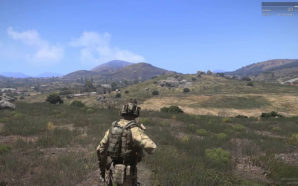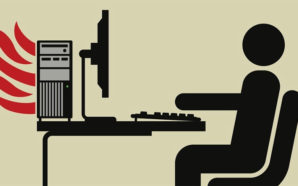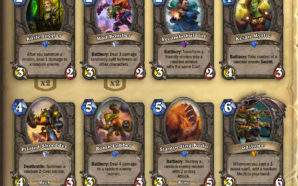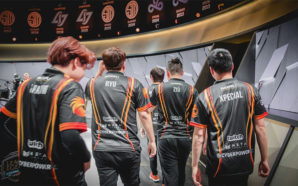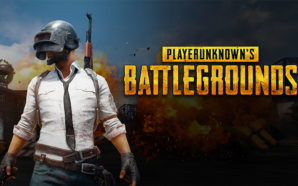Intelligent Quotient or “IQ” is often used to measure an individual’s learning and reasoning ability. The term IQ stems from standardized testing used to gauge participant’s intelligence level. In the popular Sci-Fi shooter, Halo, IQ is gauged by solving problems ingame. Although there is no test, nor a score to grade how well you understand the game, when you witness a player who displays a high Halo IQ, you understand their methodology, although other times, you won’t.
Having a high Halo IQ is associated with a vast knowledge of the game coupled with an enhanced situational awareness in impactful decision making. Halo IQ is inclusive of four things: Game Awareness, Understanding, Knowledge and Execution.
Understanding
Imagine a scenario a player encounters in game where the obvious response is Option A, and this option guarantees that player an easy kill. Given the same scenario, there is also Option B, which most players will be oblivious to, this option requires passing up the easy kill and holding fire to potentially offer a more significant advantage or reward. Although 99% of players will see and choose Option A in a situation (which may be the most viable and effective response) there is >1% of players that will be able to assess, choose and execute Option B in the given time frame.
In this example it’s a player’s ability to properly assess a situation and decide which action is going to have the most advantageous outcome for the team and ultimately the objective of winning the match. However, there are a few important things to note in decision making. Firstly, there are no indicators of what a player should do in a given scenario rather they must process and decide in the heat of the moment, sometimes under pressure of gun fire. Leading into my next point being that players are often given seconds or even fractions of seconds to decide which strategy is going to be the most effective, rewarding those who are nimble thinking.
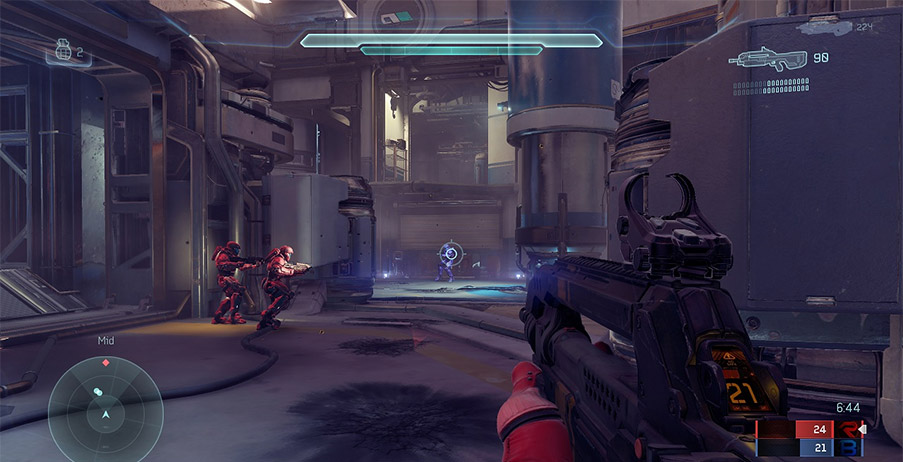
Photo Credit: http://teambeyond.net
Chasing
Chasing has always been an important element of Halo; knowing when to ‘chase’ (to pursue an enemy) or not is critical in ensuring survival or securing a kill. In Halo 5, chasing occurs more frequently thanks to the introduction of spartan abilities and in most cases, a player can successfully chase an enemy for a kill. However, chasing an enemy can often leave that player exposed and sometimes end up in being killed, while the opponent is able to escape. It’s important to understand when and when not to chase. Factors such as enemy importance (is that opponent carrying an objective or have a power weapon) and map positioning should be equated when assessing a chasing situation.
Challenging
Pertinent to the subject of chasing, challenging is another crucial decision making option. To challenge an opponent is to engage in a gun battle with an enemy. An aggressive challenge would be an instance where one player has an advantage over another (higher shields, in possession of a power-up). Aggressive challenges are often risky, but can be highly rewarding (and often embarrassing to the opponent if successful). Part of challenging is knowing when not to challenge; in certain situations, disengaging from a challenge to move to a different position (known as a reset) on the map can be rewarding. To simplify, a missed challenge is better than a lost challenge.
Anticipating Opponent Behaviors
There is a heavy psychological component of Halo, zigging when the opponent expects you to zag. Sometimes referred to as a juke, players can shake their opponents by doing the unexpected or the opposite of what is predicted. In the same breathe, a player with a high Halo IQ should be able to anticipate and predict their opponent’s behavior. Being a step ahead of your opponents by knowing their next move can allow that player to punish their opponent, either by placing a grenade or calling out their position to the rest of the team.
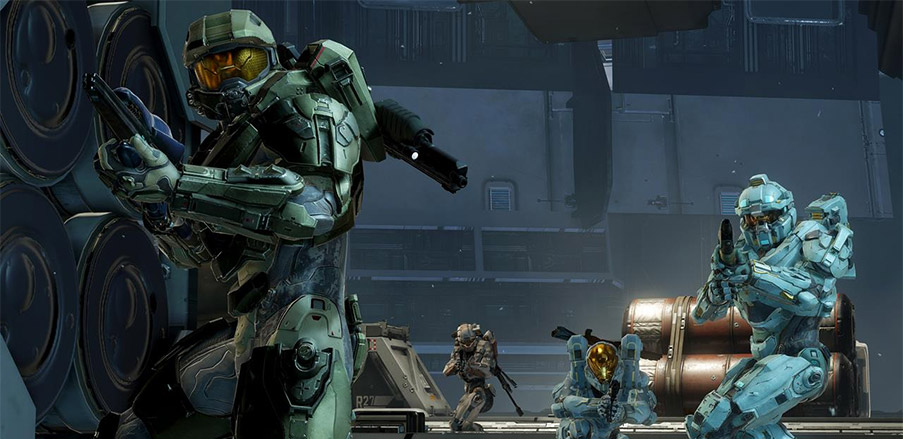
Photo Credit: vg247.com
Priority
Priority is critical in Halo, essentially, it is indicating the greatest threat during a period in a match. Understanding priority will help the intelligent player break a strong opposing set-up. Priority is knowing what plays to make, it is vital in skirmish but also important in slayer match ups. In slayer, pinpointing which enemies are inhibiting your team’s control is a good display of priority. Attempting to gain map control: for example, on Midship, players want to control Pink Tower as it offers a height advantage with ample cover. However, the enemy inside Pink Tower may not be those most valuable down your sights. Players across the map throwing out shots from Carbine side will ultimately impede any process in taking control of Pink, therefore, this player should be dealt first and foremost.
Knowledge
Knowledge is essential in tournament play, before advanced techniques are discussed, the basics of tips and tricks being used in the most current meta of the game must be fully recognized and applied. Things that we saw in the most recent 2017 Halo World Championships such as the energy sword being used by players carrying the flag to make their movement faster. Advanced techniques are still being discovered through gameplay. Knowledge of movement techniques such as the ‘stabilizer jump’ being used to gain extra height as well as the knowledge of where this technique can be utilized to reach certain areas on the map is vital in achieving a high Halo IQ. Player’s must have a comprehensive knowledge of all the techniques that can improve their gameplay.
Maps
Map knowledge can increase a player’s awareness and offer advantages to those that understand each map. Halo is a game of angles, knowing the correct angles to position yourself in offers a player information on enemy positions as well as ability to apply pressure. Ex. sniping through the staircase on the map ‘Rig”, puts the sniper in a position where he/she cannot be easily seen or shot, but can secure a kill. Skill jumps can allow players to clamber up to positions much faster than taking conventional routes. Clambering in this fashion can catch opponents off guard.
Physics
Ah, physics, perhaps you have taken a class in this field, or maybe you have just played a lot of Halo. Physics are important in Halo, most importantly grenades. Knowing trajectories of longer grenade throws or the direction a grenade will ricochet off a surface will enable players to place clever grenades for opponents to walk on top of. With the introduction of the thrust ability, a poor grenade throw will most likely be evaded by your opponent. Mastering grenade throwing techniques can make you a lethal slayer. On the subject of grenades, plasma grenades or ‘stickies’ can be used to propel power-weapons in your direction from the opposite side of the map, if placed properly..
Tips/Tricks/Exploits
Tips, tricks and exploits, mainly these are techniques discovered post-development through gameplay and reddits. Regardless which technique, whether it allows you to travel faster, reload faster, or shoot faster, these techniques must be used consistently to ensure play is at an optimal level. For example, in the older generation Halos, techniques such as the ‘BXR’, ‘Double-shot’ or ‘Head-glitching’. All of the most current known tips, tricks and exploits and their application in gameplay must be fully comprehended.
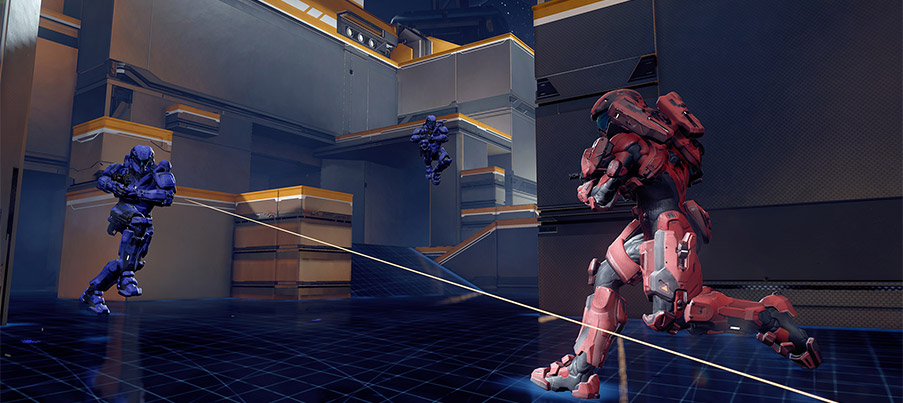
Photo Credit: gamepur.com
Technical Skill & Execution
Technical skill is a crucial component of achieving a high Halo IQ. In Halo 5, the introduction of sprint, slide, spartan charge, ground pound, stabilizers, and thrust all contributed to the evolving Halo meta. Previously foreign to the Halo series, these abilities were introduced to the game and added an additional dimension to the already high skill ceiling requiescant of professional competitors. Many of these abilities can be used in combination to give players an advantage. The applications of these techniques are boundless, however, they are primarily used for increased movement and control of characters. Spartan abilities can also be used in combinations to achieve different effects or to be applied for varying purposes. Incorporating these movement techniques with technical skill can make a player more elusive, keeping them alive longer.
Combinations
Ability combinations enable players to do more than what developers had intended during development. Ground pounds are all or nothing, you suspend in the air and plummet to the ground destroying everything within your hitbox upon impact. However, the ground pound can also be used as a “stall”; meaning a player can suspend themselves in the air, then cancel out with a thrust. This adds an additional layer to the game’s meta.
Rhythm
Rhythm can be attributed to many different elements of Halo. It’s primarily unique to each player as well. Strafing is one element that requires a rhythm; Strafing elements include directional movement, crouching, jumping and thrusting. An unpredictable strafing rhythm will make you harder for enemies to shoot and offers the player more time to slay their opponent. Rhythm is also used in shooting; although varying across players, firing slower than the fire-rate may be advantageous to some players enabling them to shoot more accurately. After all, shooting 25% slower but with 100% more accuracy will slay an enemy quicker.
Execution
It all comes down to execution really, without it, none of the skills, knowledge or understanding can be applied ingame. Execution in it’s purest is carrying out a plan or objective. Whether that be performing a skill-jump, using a ability combination or hitting a headshot with a sniper rifle, if any is not executed properly, it will most likely be punished. At best, missing a skill-jump on the first try may leave teammates exposed and without team pressure for just a few seconds. In Halo, the game often comes down to these seconds.
Game Awareness
Game awareness is.. Well, game awareness. It is recognizing what is happening around you at all times while be able to adjust, on the fly, to the situation at hand. Situational awareness is important here; A player must be able to assess their surroundings, this includes but is not limited to: teammate positions, enemy positions, weapon spawns, enemy spawns and objectives. Often many of these elements which is occurring in real-time in game must be put into consideration when devising a strategy.
Team Awareness
Halo is primarily a four vs. four sport, that means that all four players must be working in tangent, communicating and working together to achieve their objective. A vital part of this is noticing where your teammates are on the map in relation to yourself. With this information a player can know if they’ll have support when pushing into a region of the map. Communication is obviously vital, ‘calling-out’ enemies relays information to your teammates allowing them to adjust accordingly.
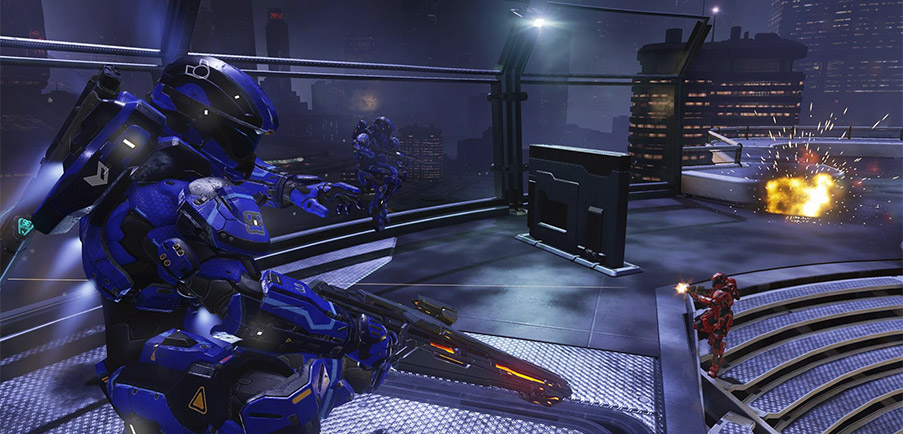
Photo Credit: vg247.com
Communication
Leading into my next point, communication is a key part of teamwork and winning matches. Players want to be able to relay information between their teammates, if you’re coming around a corner and there’s an enemy with a sword on the other side, you want to know that information. This is typically referred to as ‘calling out’, generally, you want to communicate indistinct information to your team. Your voice channels are important, so it’s ideal to stay cool and only put out the information that is valuable to your team. During intense moments in matches, you may have to execute a precise strategy working in tangent with one another. Therefore, as important as it is to communicate information with your team, it’s equally as critical to be able to listen and process the information coming in and adapt.
Pushing
Pushing into an enemy territory at the right time might result in triumph and a match winning play; pushing into an enemy territory at the wrong time will most certainly end in humiliation. Also known as collapsing on an area, or moving forward towards an enemy or objective. With a solid game awareness (recognizing team positioning versus enemy positioning) a player can distinguish between the right and wrong time to make a push. A simple example: going for a flag pull when all the enemies on the opposition are alive is probably a bad idea, resulting in a wasted life. However, a great example of pushing may be a less obvious time, potentially when only one or two of the enemy team is down and the rest of the opposing team is out of position. Being able to recognize these scenarios early will benefit your team and gameplay immensely.
Slowing Things Down
There have been too many scenarios of comebacks or upsets where a team will be leading significantly and the opposition will pull back and win the match. Halo (and Halo 5, specifically) is a fast-paced game. It’s really easy for things to spiral out of control and spiral fast. Whether that be losing a power-weapon, missing a power-up, or losing map control, these factors can contribute to a loss of momentum and focus. When there is a loss of focus, there are careless deaths that can be the deciding factor between winning and losing. In times of distress or panic, it’s important to reorganize your squad and recollect, this is what I call “slowing things down”. In many cases, pressure can work against a team if not coordinated with the rest of the team. It’s important to realize early when the momentum of a game begins to swing the other way, and it’s up to the team to halt that momentum, immediately.




